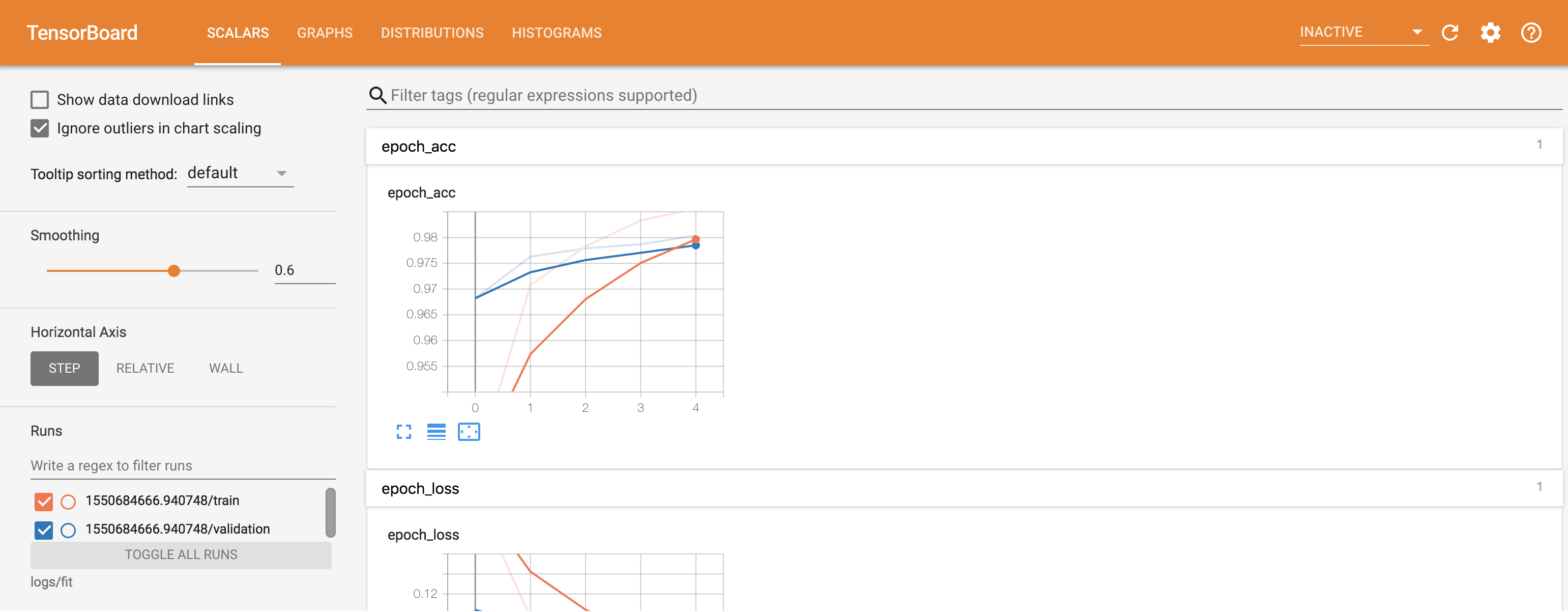This article was published as a part of the Data Science Blogathon
What are Tensorflow Callbacks?
Tensorflow callbacks are functions or blocks of code which are executed during a specific instant while training a Deep Learning Model.
We all are familiar with the Training process of any Deep Learning model. With the models getting more complex and resource-intensive the training times also have significantly increased. So it’s usual for models to take many hours to train. In the usual workflow before training the model, we fix all the options and parameters like learning rate, optimizers, losses. etc and start the model training. Once the training process is started there is no way to pause the training in case we want to change some params. Also, in some cases when the model has been trained for several hours and we want to tweak some parameters at the later stages, it is impossible to do so. This is where TensorFlow callbacks come to the rescue.
How to use Callbacks
1. First define the callbacks
2. Pass the callbacks when calling the model.fit()
# Stop training if NaN is encountered NanStop = TerminateOnNaN() # Decrease lr by 10% LrValAccuracy = ReduceLROnPlateau(monitor='val_accuracy', patience=1, factor= 0.9, mode='max', verbose=0)
model.fit(X_train,y_train, epochs=10, validation_data=(X_test,y_test), callbacks = [NanStop, LrValAccuracy])
Let us have a look at some of the most useful callbacks
EarlyStopping
When we are training our models, we usually take a look at the metrics in order to monitor how well the model is performing. Usually, if we see extremely high metrics, we can conclude that our model is overfitting and if our metrics are really low then we are underfitting.
In case if the metrics increase above a certain range we can stop the training to prevent overfitting. The EarlyStopping callback allows us to do exactly this.
early_stop_cb = tf.keras.callbacks.EarlyStopping(
monitor='val_loss', min_delta=0, patience=0, verbose=0,
mode='auto'
)
- monitor: The metric you want to monitor while training
- min_delta: The minimum amount of change in the metric you want to consider as an improvement over the previous epoch
- patience: The number of epochs for which you wait for the metric to wait. Else, you stop the training.
- verbose : 0: don’t print anything, 1: show a progress bar, 2: print only epoch number
- mode :
- “auto” – try to detect the behaviour automatically from the metrics are given
- “min” – stop training if metrics stopped decreasing
- “max” – stop training if metrics stopped increasing
LambdaCallback
tf.keras.callbacks.LambdaCallback(
on_epoch_begin=None, on_epoch_end=None, on_batch_begin=None, on_batch_end=None,
on_train_begin=None, on_train_end=None, **kwargs
)
Here we can pass any lambda function we need to execute at the specified time. Let’s see what the arguments mean
- on_epoch_begin: call the function at the beginning of each epoch.
- on_epoch_begin: call the function at the end of each epoch.
- on_batch_begin: call the function at the beginning of each batch.
- on_batch_end: calls the function at the end of each batch.
- on_train_begin: calls the function when the model starts training
- on_train_end: calls when the model training is completed
print_batch_callback = LambdaCallback(on_batch_begin=lambda bat,log: print(bat), on_batch_begin=lambda bat,log: print(bat))
LearningRateScheduler
One of the most common tasks during the training process is to change the learning rates. Usually, as the model approaches the loss-minimization minima (best fit) we gradually start decreasing the learning rate to have better convergence.
Let’s see a simple example where we want to reduce our learning rate by 5% for every 3rd epoch. Here we need to pass in a function to the schedule argument which specifies the logic for change in learning rate.
def schedule(epoch,lr):
if epoch % 3 == 0:
lr = lr - (lr*.05)
return lr
return lr
# Decrease lr by 5% for every 3rd epoch
LrScheduler = tf.keras.callbacks.LearningRateScheduler(schedule,verbose=1)
ModelCheckpoint
We use this callback in order to save our Model at different frequencies. This allows us to save weights at intermediate steps so that if needed we can load weights later.
tf.keras.callbacks.ModelCheckpoint(
filepath, monitor='val_loss', verbose=0, save_best_only=False,
save_weights_only=False, mode='auto', save_freq='epoch'
)
file-path: the location where the mode
monitor: metric to be monitored
save_best_only: True: Save only the best model, False: Save all the models when metric improves
mode: min, max, or auto
save_weights_only: False: save only model weights, True: Save both model weights and model architecture
For example, let’s see an example to save the model having the best accuracy
filePath = "models/Model1_weights.{epoch:02d}.hdf5"
model_checkpoint_callback = tf.keras.callbacksModelCheckpoint(
filepath=filePath,
save_weights_only=True,
monitor='val_accuracy',
mode='max')
Here we specify the file path using some template strings. {epoch:02d} is substituted by the epoch number when saving the model
ReduceLROnPlateau
This callback is used to reduce the training rate when the specific metric has stopped increasing and reached a plateau.
tf.keras.callbacks.ReduceLROnPlateau(
monitor='val_loss', factor=0.1, patience=10, verbose=0,
mode='auto', min_delta=0.0001, cooldown=0, min_lr=0, **kwargs
)
factor: the factor by which LR is reduced. New learning rate = old_learning_rate * factor
min_delta: minimum change needed to be considered as an improvement
cooldown: number of epochs to wait until the LR is reduced
min_lr: a minimum value below which the Learning rate cant go
TerminateOnNaN
tf.keras.callbacks.TerminateOnNaN()
Tensorboard
Tensorboard allows us to display information regarding the training process like Metrics, Training graphs, Activation function histograms, and other distribution of gradients. To use tensorboard we first need to set up a log_dir where the tensorboard files get saved to.
log_dir="logs" tensorboard_callback = tf.keras.callbacks.TensorBoard(log_dir=log_dir, histogram_freq=1, write_graph=True)
- log_dir: directory to which the files are saved
- histogram_freq: epochs frequency for which the histogram and gradient maps are computed
- write_graph: whether we need to display and visualize graphs in the tensorboard

Image 1 (link below)
Write your own Callbacks
Apart from the inbuilt callbacks, we can define and use our own callbacks for different purposes. For example, let us say we want to define our own metric which gets calculated at the end of each epoch.
# Monitor MicroF1 and AUC Score
class Metrics_Callback(tf.keras.callbacks.Callback):
def __init__(self,x_val,y_val):
self.x_val = x_val
self.y_val = y_val
def on_train_begin(self, logs={}):
self.history = {"auc_score":[],"micro_f1":[]}
def on_epoch_end(self, epoch, logs={}):
auc_score = roc_auc_score(self.y_val, model.predict_proba(self.x_val))
y_true = [0 if x[0]==1.0 else 1 for x in self.y_val]
f1_s = f1_score(y_true,self.model.predict_classes(self.x_val), average='micro')
self.history["auc_score"].append(auc_score)
self.history["micro_f1"].append(f1_s)
Metrics = Metrics_Callback(X_test,y_test)
Here we want to calculate the F1 score and AUC score at the end of each epoch. in the __init__ method we read the data needed to calculate the scores. Then at the end of each epoch, we calculate the metrics in the on_epoch_end function. We can use the following methods to execute code at different times-
Conclusion
These were a few commonly used and most popular callbacks. The official TensorFlow documentation: https://www.tensorflow.org/api_docs/python/tf/keras/callbacks/Callback gives us in-detail information about various other callbacks and their related use cases.
Image Sources
- Image 1 – https://www.tensorflow.org/tensorboard/get_started




